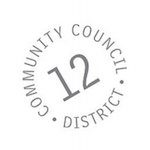The St. Anthony Park Community Council believes that our policies and programming should be informed by data that highlights where can focus our limited resources to have the greatest impact on our community well-being. We leverage support and expertise from our many neighboring Universities and organizational partners to better understand our community, using community-based research methods that honor the expertise and experiences of local residents to determine the best solutions for our own community. We use an equity lens in our research to center voices from our community who are less represented historically in policy work and less able to access policy channels.
Read some of our research below:
How can SAPCC ensure “universal access to a ordable, nutritious and healthy food, with…no community at a disadvantage”? By Samantha Hodges, UMN-HHH student.
This research study explored how the food desert in St. Anthony Park affects section 8 housing residents, as well as viable solutions to eliminating it. By Bettsy Hjelseth, UMN CURA Kris Nelson Community-Based Research Assistant.
The project assesses the connectivity of transit, quality of transit stops, bicycle connectivity, bicycle parking, and availability of sidewalks. By Jeff Cornell, Augsburg University student.
This Plan first looks at the existing assets of the location of the West Midway Industrial Area and the strength of the existing industrial sector. Then, the actions of this Plan focus on business collaboration and strategic public investments to set the table for increased private industrial investment.
SAPCC and FSI have worked together to engage Saint Anthony Park residents and businesses about the transformation of Raymond Avenue. By Lars Christiansen and Kimberly Club, Friendly Streets Initiative.
A task force of community and business interests in the West Midway area of St. Paul convened to make recommendations on the transportation network.
This document appends to the Comprehensive Plan the vision of the Como 2030 Small Area Plan for the Como Avenue corridor in North St. Anthony Park neighborhood. The Como 2030 Small Area Plan Task Force was formed to develop a consensus blueprint for an environmentally, economically, and socially sustainable area.
A pedestrian, bicycle, and traffic calming plan for the St. Anthony Park neighborhood in St. Paul and the Prospect Park neighborhood in Minneapolis. By Wade Johnson, UMN CURA NPCR Research Assistant.
The station area plans, using the foundation of the Central Corridor Development Strategy, provide a more detailed framework for integrating decisions about future land use and development; the public realm; and the movement of LRT, buses, cars, pedestrians, and bicycles at each station area. The CCDS establishes a set of strategies for how the Corridor should grow and change over the next 25-30 years in response to the LRT investment.
View more demographic data at MN Compass.
View more local planning documents or mapping resources from the City of St. Paul.
St. Anthony Park area partners have been featured in StoryBlocks in collaboration with the Friendly Streets Initiative. Read more.
